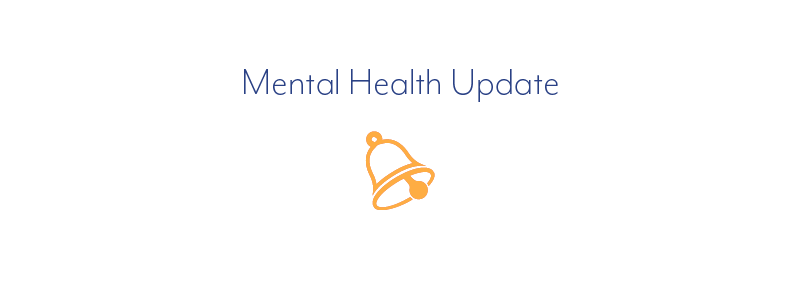Mental Health Update

07/25/2022 – Crain’s Health Pulse: 988 Update
a workforce that is appropriately compensated for their efforts.
Following 988 launch, city leaders wrestle with funding and out-of-town area codes Following the launch of the 988 suicide prevention lifeline on Saturday, the city’s leaders and mental health advocates are working to ensure the proper systems and funding are in place to handle the expected increase in calls. Of top concern to Mayor Eric Adams is what happens when a New Yorker calls the lifeline from an out-of-town area code.
Currently, when a call comes in, the area code of the caller determines which of 200 call centers nationwide will receive the call. For those requesting help in New York with a local area code, their call is routed automatically to NYC Well, the local center expected to handle 500,000 calls, texts and chats in the first year of the launch. But for New Yorkers with outside area codes, calls must be manually transferred back to NYC Well.
In the event of a crisis, every second of that transfer will count. The concern about slower response times is significant enough that Adams announced on Tuesday that the city is urging all New Yorkers to call the 10-digit direct number for NYC Well (888-NYC-WELL) rather than the 988 lifeline number.
To fix it, Adams is urging the federal government to use a geolocation system instead, which would route calls based on the physical location of the caller rather than the area code. But during high call volumes, even calls from local area codes sometimes end up out of state. A report from the state Office of Mental Health found that from October to December 2021, 39% of calls experienced too long of a wait time and were eventually bounced to an out-of-state backup center.
The launch of the lifeline is expected to lead to a 20% growth in calls in the next year. The city Department of Health and Mental Hygiene could not provide data for the number of calls that NYC Well received in its first weekend of 988.
To equip NYC Well for higher demand, the mayor announced a new round of funding for the program. The state Office of Mental Health will provide $10.8 million to hire more crisis counselors at NYC Well to receive calls and texts.
Victoria Merlino of the city Department of Health and Mental Hygiene said NYC Well doesn’t have a specific hiring goal in mind, but instead it judges by how quickly calls are answered and similar metrics.
“We are still in the early stages of 988, and will be hiring more staff as we work to understand the demand,” she said. “NYC Well is sufficiently staffed and able to handle incoming calls.”
The funding will also go toward hiring peer support specialists, who have personal lived experience with mental health or substance use challenges. A 2020 study from the nonprofit Mental Health America found that having peers available helps reduce depression, hospitalization rates and substance use in patients.
The new round of funding for the city adds to the $35 million included in the state budget to expand crisis call center capacity across the state, which will increase to $60 million next year. The state also received $7.2 million in a federal grant from the Substance Abuse and Mental Health Services Administration.
Since 988 has launched, mental health advocates have taken to social media to discuss concerns around calling the hotline. One Instagram post–which received over 247,000 likes–outlined concerns around 988 callers being sent to emergency rooms or psychiatric facilities, which the poster says from their own experience can be “medieval.” While 988 exists to decrease police
involvement in mental health emergencies, the National Suicide Prevention Line which 988 is replacing sends intervention to approximately 20% of calls, according to data.
Glenn Liebman, the chief executive of the Mental Health Association of New York State, said he believes 988 is overall a positive thing–but acknowledges community crisis intervention centers, which are not yet up and running, are the key to avoid sending patients to emergency rooms.
The state has committed to building out 12 crisis centers that will deliver clinical care, and there are plans to build another 12 offering peer and community support.
Executive director of the state National Alliance on Mental Illness Wendy Burch added that as she understands it, a patient would be responsible for getting themselves to the crisis center. Ideally New York could set up a system where the 988 responder could connect a caller directly to a center, she said–but added that NAMI is encouraged by the resources the state is
dedicating to mental health care.
There’s also the question of what happens once a patient leaves a crisis center, Liebman said.
“If we are able to create this vision of crisis response with 988, stabilization centers and mobile response] we’re farther than we’ve been in the past, but still dealing with a system that doesn’t always respond to the issues of individuals,” he said. “This is all laudable stuff, but we’re in a workforce crisis, and if we don’t have the workforce to maintain this kind of system it doesn’t matter what we design. We need to be sure we pay and retain our workforce and recruit quality staff.”
The 988 launch comes after a 2020 federal law was enacted to shorten the 10-digit National Suicide Prevention Lifeline. But for local agencies, the change is more than just a number. It’s part of a broader effort to change how authorities respond to mental health emergencies, with fewer police and more mental health-specific experts. By calling 988 instead of 911, callers
reach crisis counselors who are better equipped to respond, and they’re able to send a mobile crisis unit of mental health professionals if an in-person visit is needed. — James O’Donnell and Jacqueline Neber
$15M surgery facility in the works from Mount Sinai Ambulatory Ventures